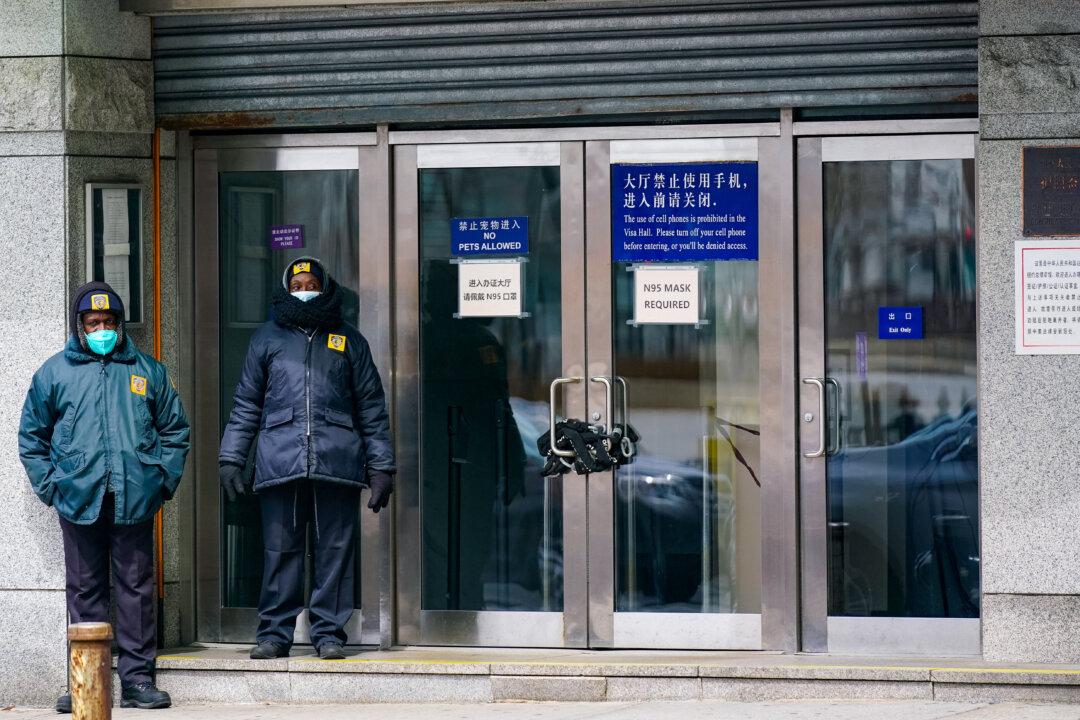Drug Trafficking Colludes With Chinese Money Laundering
It is a “money-laundering case with a side of marijuana,” the District Attorney of the 18th Judicial District John Kellner said on June 10 at a news conference in Centennial.The District Attorney’s office provided The Epoch Times with a 24-page grand Jury indictment in Arapahoe County showing that the DEA’s (Drug Enforcement Administration) five-year investigation revealed that “Chinese Money Laundering Organizations [CMLOs] had become the dominate money laundering mechanism utilized by drug trafficking organizations [DTOs] to launder their drug money through the U.S.”
In October 2020, a post on a Chinese social networking site caught the attention of a DEA agent. The netizen named “Peter” claimed an urgent need to exchange Chinese currency. A Mandarin-speaking DEA agent chatted with him privately, finding that Peter could offer an exchange rate more attractive than banks, as well as other advantages like trading in person and the capability to exchange $60,000 within one or two weeks.
Both sides agreed that the agent would first transfer the Chinese currency to Peter’s sister-in-law’s Chinese account, and then collect the equivalent in U.S. dollars from the connector.
This type of underground money operation does not need to go through the U.S. financial system—no physical movement occurs, but it can reach a “balance between the two places.”
“Especially here in Colorado, DEA and the Department of Revenue realized that CMLOs were illegally growing marijuana and using the ... scheme to launder their illegal black market marijuana proceeds,” states the indictment.
The Sting Operation
On Nov. 5, 2020, suspected money launderers Lin Zhang and Yan Chen appeared as scheduled to meet with the agent. The agent opened Zhang’s cell phone and saw photos of marijuana plants and a handwritten schedule of marijuana cultivation, and eventually confiscated the $46,000 in cash brought by the two launderers, believing the cash came from the illegal manufacture and distribution of marijuana.Subsequently, law enforcement agents conducted an in-depth investigation. On March 2 this year, agents raided two residences in Colorado with a search warrant and found tens of thousands of dollars in cash, several pounds of packaged marijuana, and a plant room used to grow marijuana. Although the homeowner demolished the plant room, the scene was still full of the strong smell of fresh cannabis plants.
According to an electricity bill of one of the residences, the monthly consumption was 1,230 kWh in November 2019, and increased by 7–10 times in January 2021 with a consumption of 11,737 kWh.
Indoor cannabis houses typically feature the following characteristics: multiple light bulbs to simulate long-term exposure, exhaust fans, dehumidifiers, and other equipment used to simulate outdoor growing conditions, which consumes huge amounts of electricity.
The investigation resulted in 21 Chinese people indicted in Colorado, 16 of whom have been arrested. The prosecutor issued several charges ranging from racketeering and conspiracy under the Colorado Organized Crime Control Act to drug cultivation and distribution to money laundering.
The indictment alleges that a portion of the investments to purchase illegal marijuana houses in Colorado came from mainland China, and the money laundering organization helped circumvent China’s foreign exchange controls (remittances limited to less than $50,000 per person per year). In other words, marijuana was used to raise money by luring mainland Chinese investors to put their money into the U.S. illegal marijuana market and act as an underground money maker.
New York Chinese Flock to Other States to Grow Marijuana
During the COVID-19 pandemic in 2020, New York became the hardest epidemic area, and a lot of businesses were shut down, but the marijuana business was booming. Many unemployed Chinese people flocked to marijuana farms in other states to pursue the “dream of growing marijuana to get rich.”After the lockdown when New York’s economy restarted, many employers in the Chinese community found it “difficult to recruit,” because many of their former employees went to other states to grow cannabis.
“One of my veteran staff who has been working with me for a long time told me that he won’t come next Monday and was going to Oklahoma to grow marijuana,” said Ling Fei, a computer store owner in Brooklyn.
Legal Loopholes in Marijuana Laws Are Causing Trouble
All of this began when California became the first state to legalize medical marijuana in 1996 during the presidency of Bill Clinton. From then on, many Chinese began to grow marijuana and found it profitable.Colorado’s recreational marijuana laws have made it easier for “groups like this to flourish,” admitted John Kellner. “I want to emphasize that while this is a micro-cell in our state of Colorado … we believe that this is going on a macro-level across the entire United States.”
Even if recreational marijuana is legal in Colorado, companies must apply for marijuana business licenses to become a verified seller in the state. However, some Chinese mistakenly think that legalizing marijuana in various states means that growing it on a large scale is also legal. Others know it’s illegal, but are driven by the huge profits and still take the risk of going in.
Lu said that most people join through business invitations from farmers with land and factories ready. You can rent a room, buy a seedling, or you can invest money “in shares.” A marijuana planting project is often funded by many fellow provincials or townsmen in China.
The lax medical marijuana laws in Oklahoma have made the state a “Wild West” for marijuana cultivation. “It’s obvious that the black market is quickly overtaking our medical marijuana presence in the State of Oklahoma,” a member of the Oklahoma House of Representatives Mike Dobrinski said. “Actions are being taken. Everyone is concerned. I assure you it’s not falling on deaf ears.”




